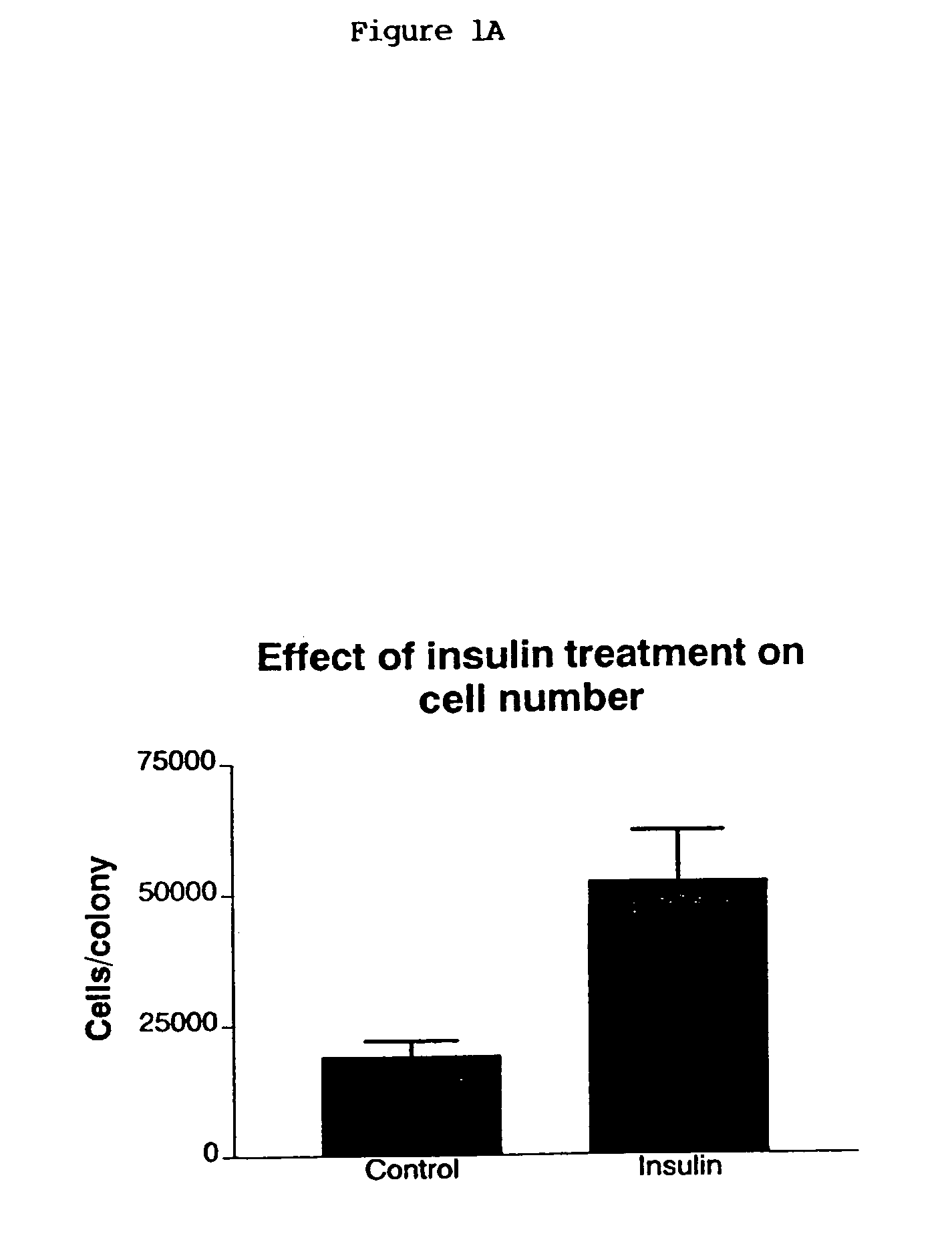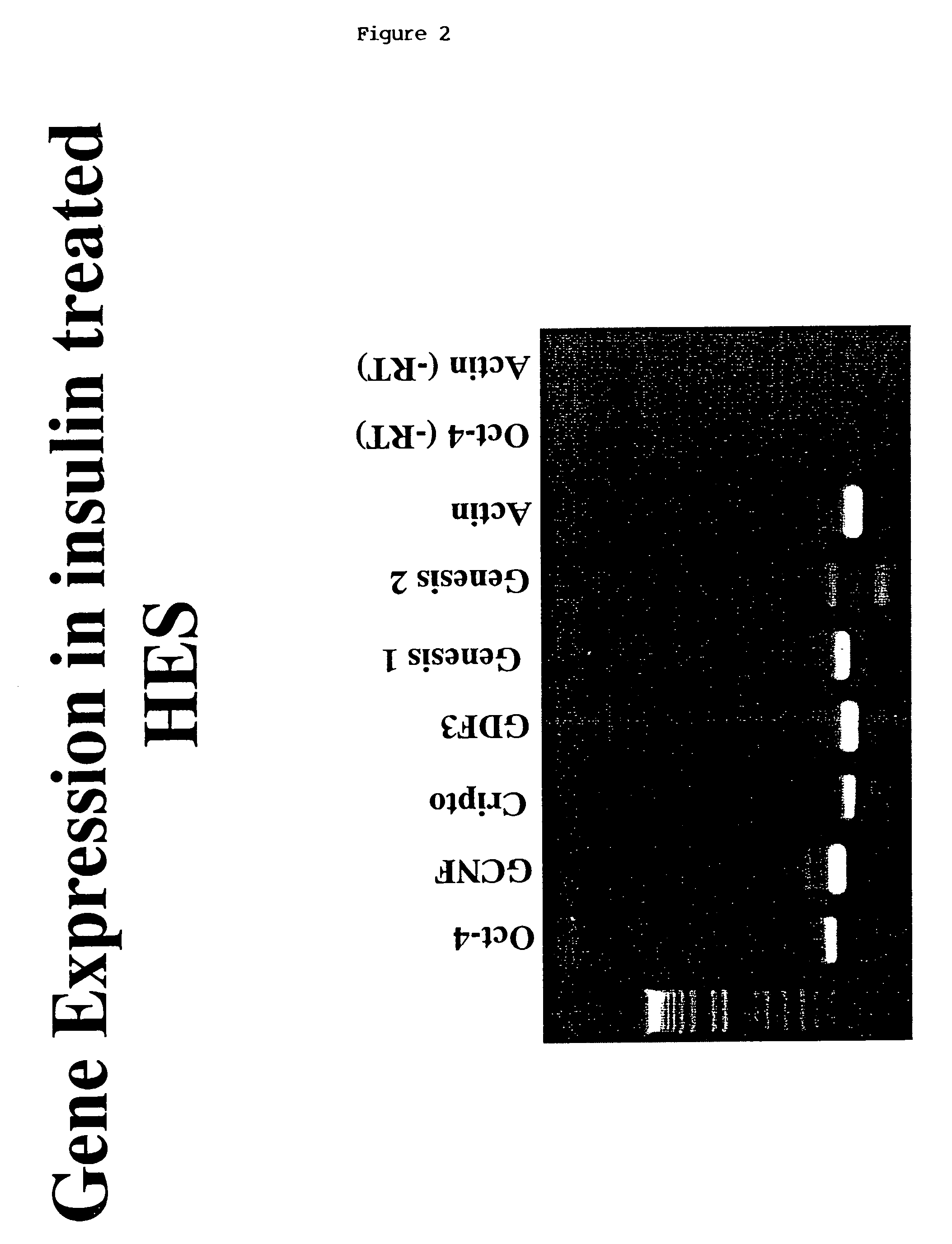Methods of culturing embryonic stem cells and controlled differentiation
- Summary
- Abstract
- Description
- Claims
- Application Information
AI Technical Summary
Benefits of technology
Problems solved by technology
Method used
Image
Examples
example 1
Action of Insulin on Short Term Maintenance of Human Embryonic Stem Cells
[0197]HES-1 or HES-2 cells described in PCT / AU99 / 00990 were subcultured in the presence or absence of insulin and maintained without subculture for periods of 1–4 weeks. Colonies of treated or control cells were harvested using dispase. Some colonies were used to determine the presence of transcripts for stem cell specific genes (October-4, Cripto, Genesis, GDF-3, GCNF) in the cultures by RT-PCR. Other colonies were dissociated to single cells and stained for the presence of stem cell specific markers such as the GCTM-2 antigen. The total number of cells per colony was determined and the percentage of stem cells present was assessed by flow cytometry. The effect of insulin on stem cell survival was assessed by assay of apoptosis on colonies. (See FIGS. 1 and 2).
example 2
Action of Insulin on Long-Term Maintenance of Human Embryonic Stem Cells
[0198]HES 1 and HES-2 were cultivated for 10 passages in the presence of insulin. At this point, the cell phenotype was determined using immunochemistry and RT-PCR for stem cell markers, the karyotype was assessed by G-banding, and the ability to differentiate into various cell types was assessed by transplantation of cells into said mice and by immunostaining of cells grown to high density for various markers of specific differentiated cell types including neuronal and muscle cells.
example 3
Effect of Insulin on Somatic Differentiation of Human ES Cells
[0199]HES1 and HES2 were subcultured in the presence of insulin and maintained for 3–6 weeks without further transfer. The extent of extraembryonic differentiation was assessed by morphological evaluation of the presence of squamous cells forming cystic vesicles. The extent of somatic differentiation was assessed by morphological assessment and by immunochemical staining for known markers of somatic cell lineages including neuronal markers. (See FIGS. 3 and 4).
PUM
 Login to View More
Login to View More Abstract
Description
Claims
Application Information
 Login to View More
Login to View More - R&D
- Intellectual Property
- Life Sciences
- Materials
- Tech Scout
- Unparalleled Data Quality
- Higher Quality Content
- 60% Fewer Hallucinations
Browse by: Latest US Patents, China's latest patents, Technical Efficacy Thesaurus, Application Domain, Technology Topic, Popular Technical Reports.
© 2025 PatSnap. All rights reserved.Legal|Privacy policy|Modern Slavery Act Transparency Statement|Sitemap|About US| Contact US: help@patsnap.com



